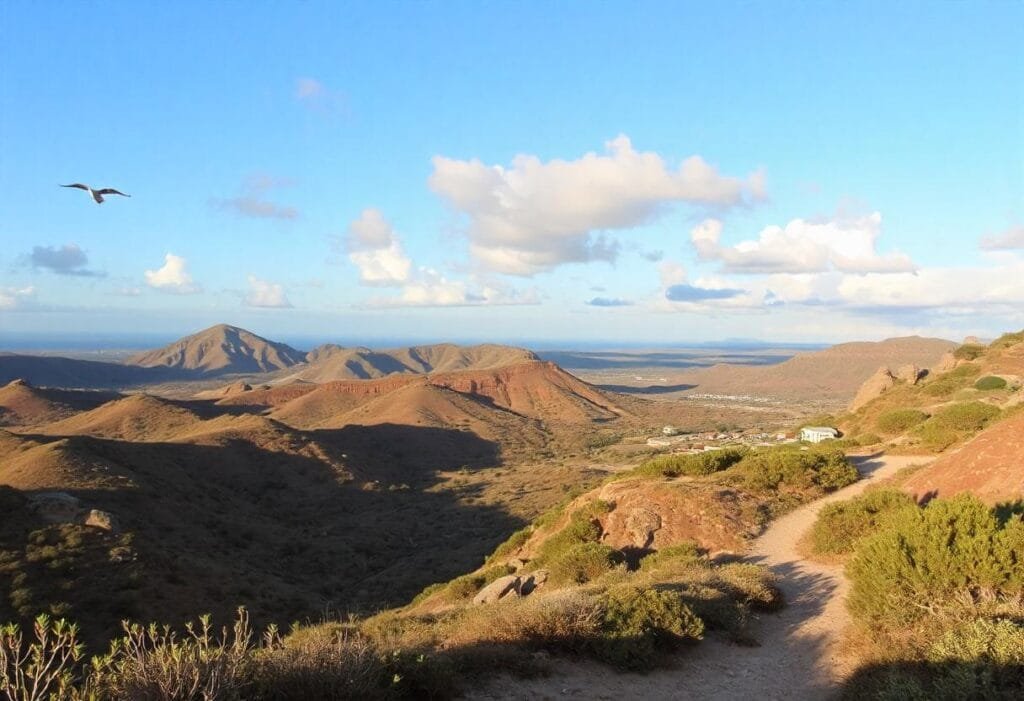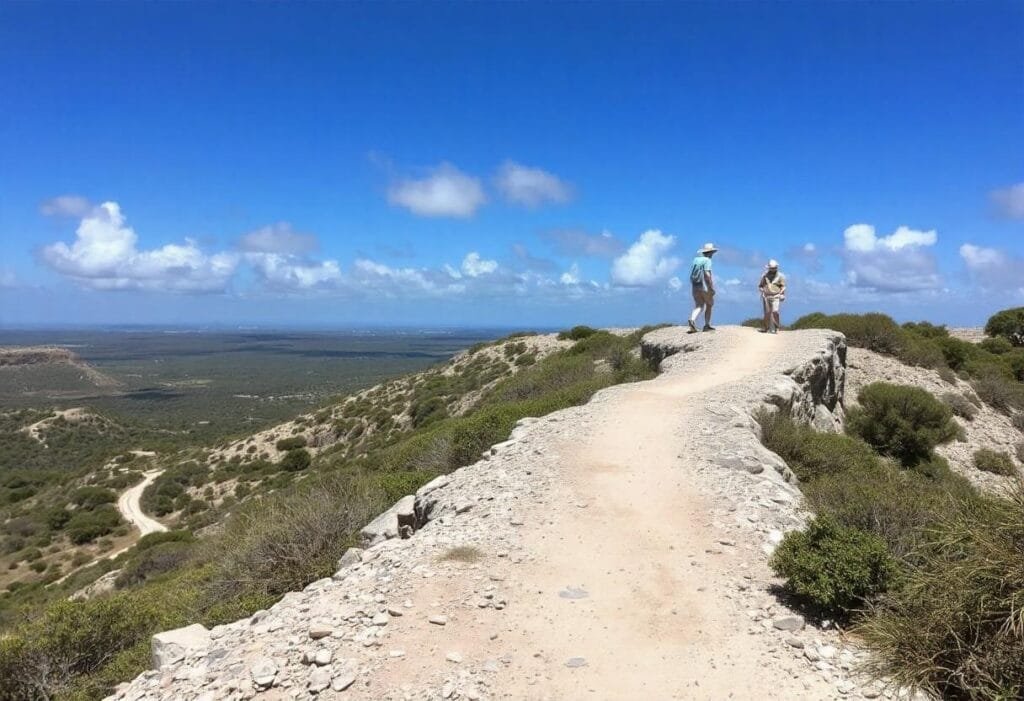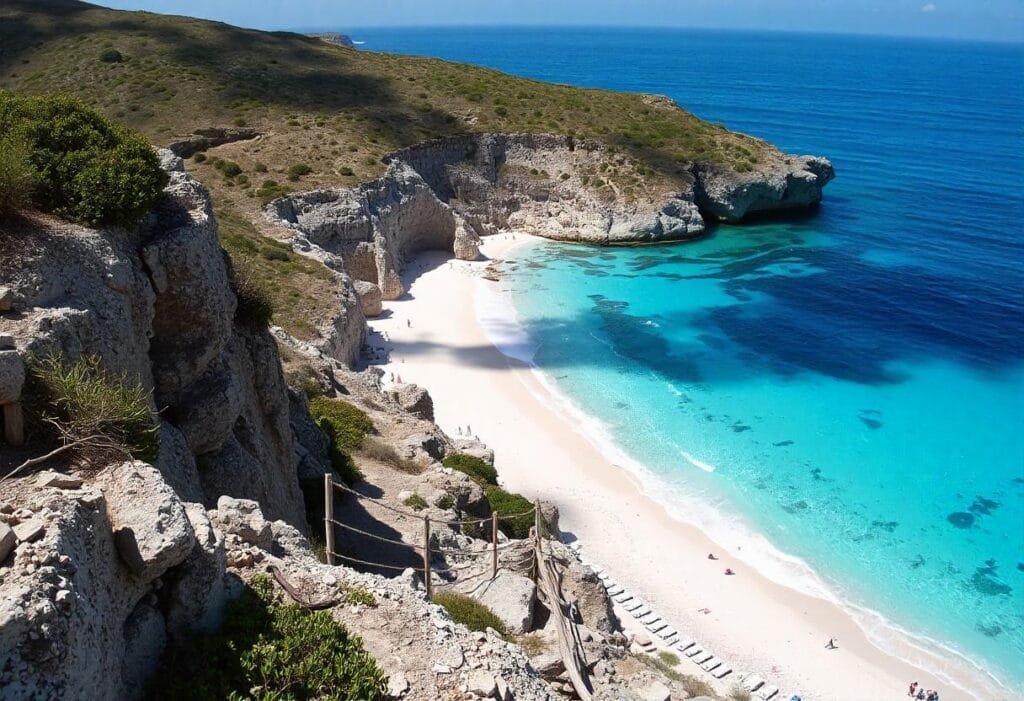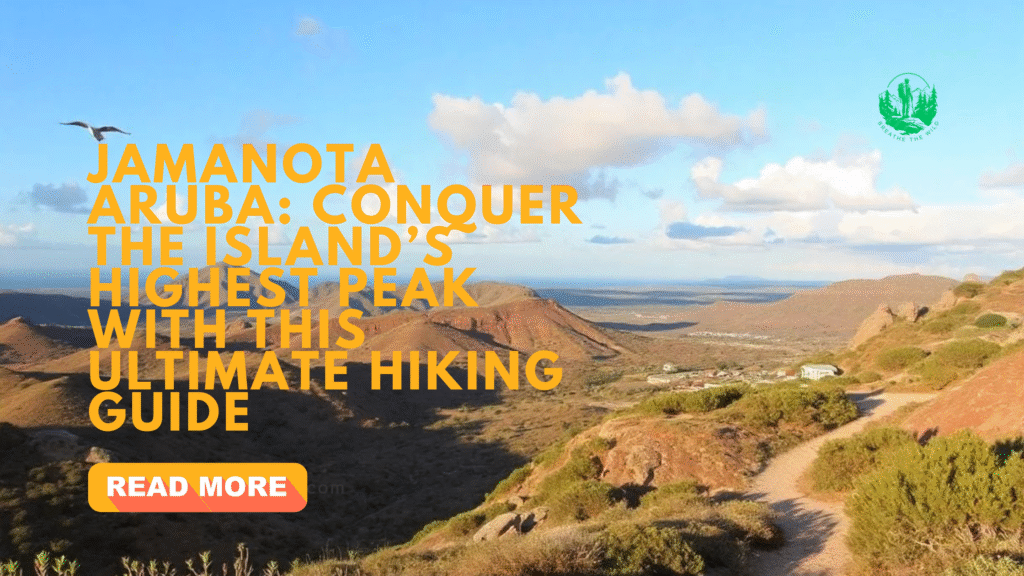Table of Contents
Introduction: Discover Aruba’s Best-Kept Secret – Jamanota
When the vast majority of tourists are thinking of Aruba, they imagine a paradise of white beaches and blue seas, and resorts to unwind. This is the known side of the island, though, and hidden along the interior of Arikok National Park is a completely different side of the island, one very different and waiting to be discovered by those who love adventure. Aruba has Jamanota peak, which rises to 188 meters/617 feet and provides hikers with an experience that is far more than a beach.

The exhausting journey at the end of this steep but exciting ascent is worth the agony as it provides a scenic view of the coastline, the hills covered in Cactus, and the distant desert lying ahead of this isle of Aruba. The location of Jamanota Aruba among the accessible, beautiful, and close to local heritage is a happy medium in terms of finding the ideal off-the-beaten-path experience in the eyes of both nature lovers and those wondering about Aruba on a hiking quest.
Here, in our final guide to hiking, we will take steps, inch by inch, to get you to the new heights on Jamano by going into details of the trail itself, tips on what to pack, inspiring seasonal and planning suggestions, and other attractions around this popular hiking destination. This guide will advise you on how to overcome the wildest peaks of Aruba, whether you are a person of experience or even a novice in exploring.
Discovering the Heart of Arikok: What Makes Jamanota Aruba Special
The Jamanota Aruba is the tallest geographical hill on the island, which was named after Arikok National Park in which it is situated. It is not a soaring peak by international standards (at 188 meters/ 617 feet above sea level), but what it lacks in height, it makes up for in views and escapism. Met by the prickly hills covered with cacti, windswept ridges, and the open desert landscape, Jamanota presents an entirely new experience as opposed to the coastlines, which are typical of the the Aruba tourist itinerary.
This area is an interesting mixture of desert and mountainous landscape, as well as of the red rocky formations, deserted river valley, and the breathtaking panoramas up to the Caribbean Sea. In between, there are endemic divi-divi trees, tall cactus plants, endemic birds such as the Aruban burrowing owl, and even the rare Aruban rattlesnake can be seen along the trail. This is rough terrain that makes a hike there not only a physical experience but a way to feel the wild Aruba.
The Jamanota Hiking Trail: What to Expect on the Way Up
The Jamanota hiking trail is a fairly short and easily accessible trail, thus making it an ideal adventure for all levels of experience. The trailhead starts with a marked trail inside the Arikok National Park, and walking to the summit and back will take you an average of 1-1.5 hours, depending on how fast you are and how frequently you halt to take in the view. The path is an inclining course on dirt and rocks and is winding with great views of the mountains, which are spread out at the top of the mountain.
Being a relatively novice-friendly trail, however, it constitutes a sufficient amount of elevation gain and rugged terrain to indicate the experience as a true hike. Be ready to meet a rocky patch, very little shade, exposure to wind, and sun. Among the notable features is reaching the ruins of an old radar station at the top, a remnant of World War II in Aruba’s history, and taking in panoramas of 360 degrees, which stretch across the craggy inside right as well as sparkling coastline. Clearly, it is even visible at times, as it is far, and one can see as far as Venezuela.
Check Out: Balashi Gold Mills: Explore Aruba’s Historic Ruins on a Stunning Scenic Hike.
Best Times to Hike: Weather, Season, and Timing Tips

The advantage of visiting the Jamanota Aruba is that it is open throughout the year since the warm and arid weather of the island (sunny) allows hiking on the trail. Nevertheless, to get the most out of it, it is important to be smart in choosing the time. The preferred and most pleasant scenic walks occur in early morning or late afternoon since temperatures are cooler and there is a glow to the desert scenery at that time. Hikes at midday are not advisable, particularly in the warmest months in Aruba (May to September), as the effect of the sun exposure is very high and shade is scarce.
Although there are no dramatic seasons in Aruba, the amount of wind and wildlife activity might vary by a little in the course of the year. Sky and visibility are better in the winter months, and birds and blooming desert plants may be seen early in spring and summer. Visiting during a weekday morning may also be beneficial to help avoid crowds-particularly when hoping to enjoy time in quiet at the summit.
Discovering the Heart of Arikok: What Makes Jamanota Aruba Special
Set high up in the preserved nature reserve of Arikok National Park, Jamanota Aruba stands tall as the tallest point on the island. It is not a lofty mountain in terms of world standards itself, being only 188 meters (617 feet) above sea level, but too much in its way of scenic beauty and relief of escape. With cactus-dotted hills, windswept cliffs, and wide-open desert spaces surrounding it, Jamanota is a strikingly different experience from the coastlines that come to dominate most Aruban itineraries.
Here, the landscape is something amazing, a mix of mountains and desert, where we can find red rocks with a vast number of dry riverbeds and can observe increasing views of the Caribbean Sea. Among the highlights hikers could observe along the way include the iconic divi-divi trees and the towering cacti, the native birds such as the Aruban burrowing owl, and even the elusive Aruban rattlesnake, only found on the island. The hike is not a mere physical one in this rugged wilderness, but it gives a chance to get close to the untouched interior of Aruba.
The Jamanota Hiking Trail: What to Expect on the Way Up
Jamanota hiking trail is shorter and is also easy to reach, and is a suitable adventure for anybody. It starts at one of the marked trailheads in the Arikok National Park, and typically takes 1-1.5 hours both ways, with no one being particularly fast or slow and making a stop every minute or two to appreciate the particular texture at hand. The path is a straight dirt-rock path with even gradient, although the view from the top is breathtaking.
Though the trail has been labeled, one of those that are suitable for beginners, it possesses sufficient hill climbs and rough trails to be termed as a hiking experience. You had better be ready to find rocky places, very few trees, the wind, and the sun. One of the appeals during its route to the top is that at the top, one will be able to encounter the ruins of an old radar post, which is a historic reminder of the ways Aruba was engaged in World War II. On clear days, even the distance is observed in Venezuela!
Best Times to Hike: Weather, Season, and Timing Tips

The second positive aspect of hiking Jamanota Aruba is that due to the sunny and dry climate of the specified island, people can visit the path during the entire year. However, to enjoy it to the maximum, one should have clever timing. These may also be referred to as the most comfortable and scenic hikes since they may be done early in the morning or in the late afternoon when the environment is less hot and the desert light makes the scene even brighter. It is even impossible to hike around noon, especially in the warmer months of the year in Aruba (May- September), because of the intensity of the sun, along with the insufficient cover.
However, Aruba lacks a dramatic season, but the intensity of winds and wildlife activity might slightly vary according to the season. Winter months tend to be clearer and easier to see than the spring and early summer, when it is a better chance to see birds in the sky and when desert plants are blossoming. It is also advisable that one visit during the weekdays (preferably during the morning), especially in the event that you wish to have a quiet moment on the top.
Conclusion: Take the High Road on Jamanota Aruba
Perhaps Jamanota Aruba is not the biggest mountain that you will pass in life, but something unique, an inspirational moment on top of a mountain in the world of a desert paradise in the land of Aruba. It provides a blend of adventure and peace, an uninterrupted path, scenic panoramas, and a real haven of biodiversity.
To fit all customers, Jamanota is able to provide both non-experienced tourists, who came to admire the beauties of the island, and the experienced tourists, who love spending time in the real attractions. If you prefer to be up early to get some early-morning peace to yourself (or with those few there to scout around or watch), late-afternoon top montane, the sun setting, or sunset photo, this trail will get you there to what may be one of the most beautiful places in the world, in Aruba.
For more info: Click Here.
FAQs: Jamanota Aruba Hiking Essentials
1. Does Aruba have a permit to hike Jamanota?
Yes, Jamanota is within the Arikok National Park, so there will be an entrance fee (around 11 USD). The fee recovers maintenance and preservation efforts on paths. There is no special hiking permit required other than a park pass.
2. What is the number of hours it takes to hike to the top of Jamanota?
The trail is fairly short, and usually it will take you about 1 or 1.5 hours round trip at a comfortable pace; that is also dependent on how long you spend at the peak. Not particularly demanding of a hike with most fitness levels, but still has great views and a good feeling of achievement.
3. Can you hike Jamanota Aruba?
Yes, the pathway is quite safe even for hikers who go alone as long as one does not go beyond the park’s hours and or meeting points. Ensure you carry water, sunscreen, and leave some of the information with others on where you are going. It is a good idea to hire to accompany you a local guide to impart culture and ecology knowledge to enhance your experience beyond the researched information and up to the safest point.



